Introduction
In the first part of this blog post on the application of HIIT science within Gaelic football, we covered the sporting demands from a physical and physiological perspective (1, 2, 3, 4, 5). These demands tend to vary across specific systems of play a coach requires. Therefore, the ability of conditioning staff to have the knowledge base to employ a number of specific HIIT methodologies across the Gaelic football training process is of vital importance in order to ensure players have the required capacities to execute the physical, technical and tactical skills during competitive match-play across multiple games within a competitive season.Within this blog post we will delve into several key HIIT weapons used by conditioning staff across the Gaelic football season.
Key HIIT weapons and manipulations
When we talk about HIIT weapons within this blog, we are referring to specific formats of conditioning interventions we employ across a Gaelic football season from a pitch-based perspective (Figure 1). These specific formats are systematically modulated to target the desired acute physiological, metabolic and physical adaptation (Figure 2), while managing and maintaining a minimal effective dose across our player’s performance bandwidth (Figure 3) within each session — across weeks, months, or phases of the season. Within all our HIIT formats, we strive for quality over quantity and search consistently for the minimum effective dose of prescription within all our training sessions and drills, so as to develop durability, repeatability, robustness, and recoverability in our athletes.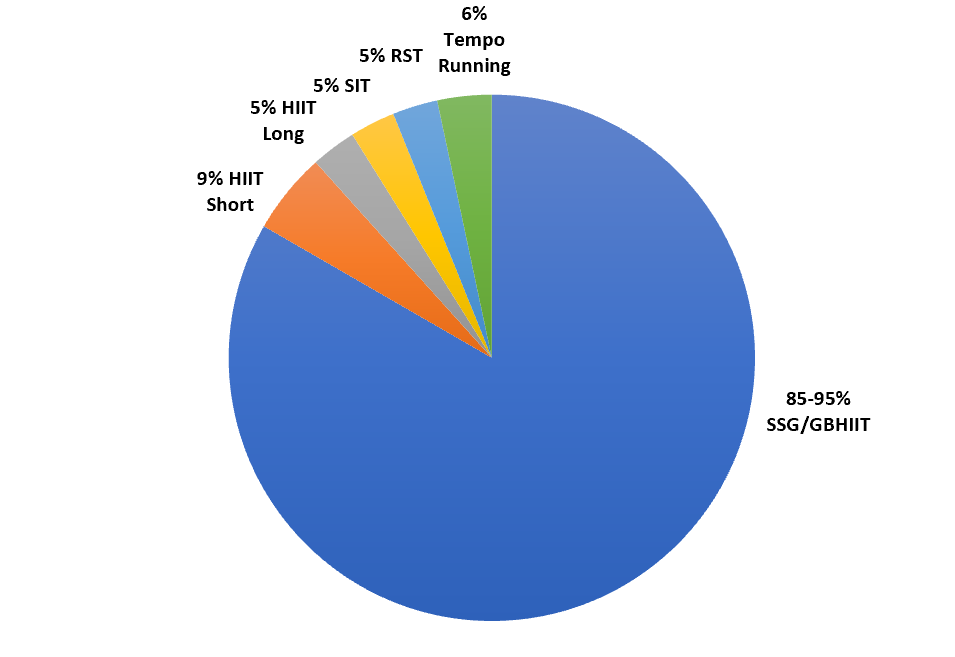
Figure 1. The percentage breakdown of a season for HIIT weapons within elite Gaelic football. These can vary between teams, hence total breakdown is over 100%. HIIT: High intensity interval training; SIT: Sprint interval training; RST: Repeated sprint training; SSG/GBHIIT: Small-sided games and Games based HIIT.

Figure 2. Key physiological targets of importance with HIIT, including the aerobic oxidative system, the anaerobic glycolytic system, and the neuromuscular system.
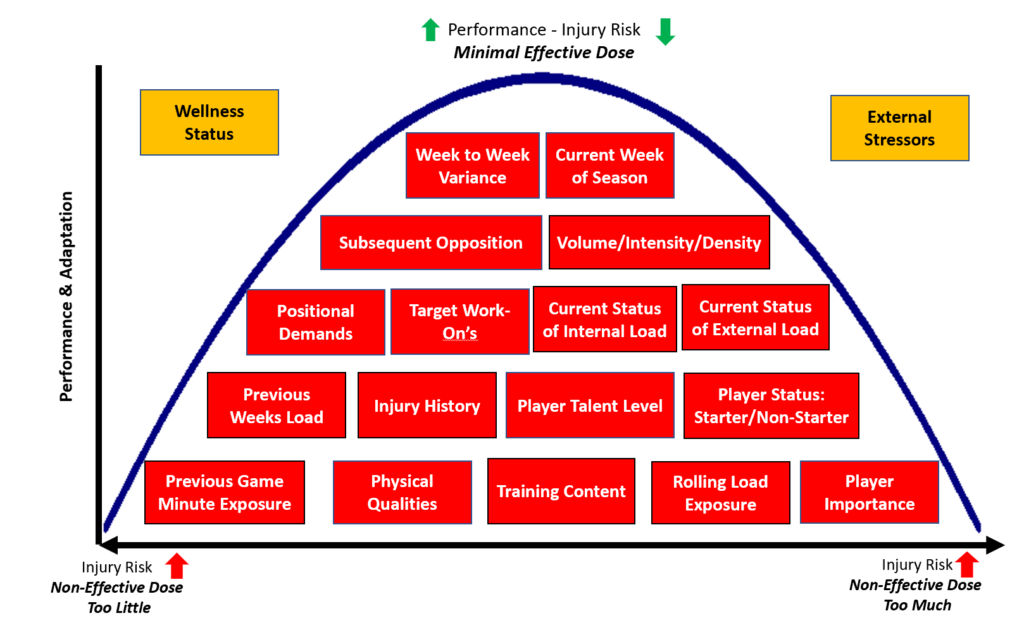
Figure 3. The theoretical minimum effective dose player bandwidth within Gaelic football and other team sports.
Before selecting our HIIT formats, we first need to have a clear understanding of how the management team wants their players to play. Additionally, having clear training objectives, training plans and targets for high, moderate and low loading sessions is important within a structured and cohesive yearly plan for a Gaelic football team.
Factors we consider prior to the application of a HIIT format include the match-play demands of a player across the prior 10-days, player profile, injury profile, player importance, training periodisation, and the long term adaptation targets.
Figure 4 shows a description of each HIIT weapon and the associated physiological target, known as the HIIT types (for information about HIIT Types click here). Additionally, a specific section is dedicated to key tempo running, SIT and small sided-game training.
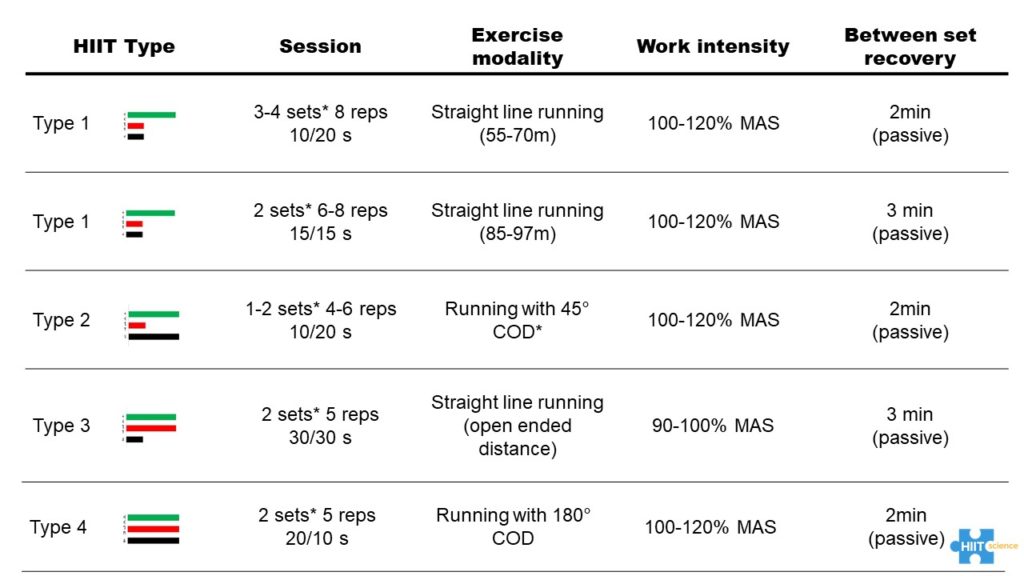
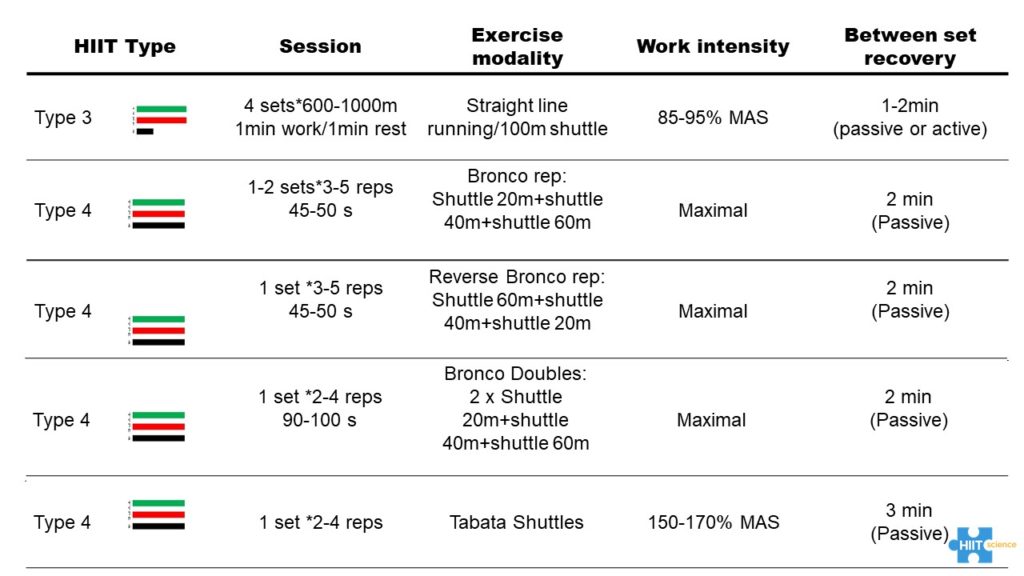
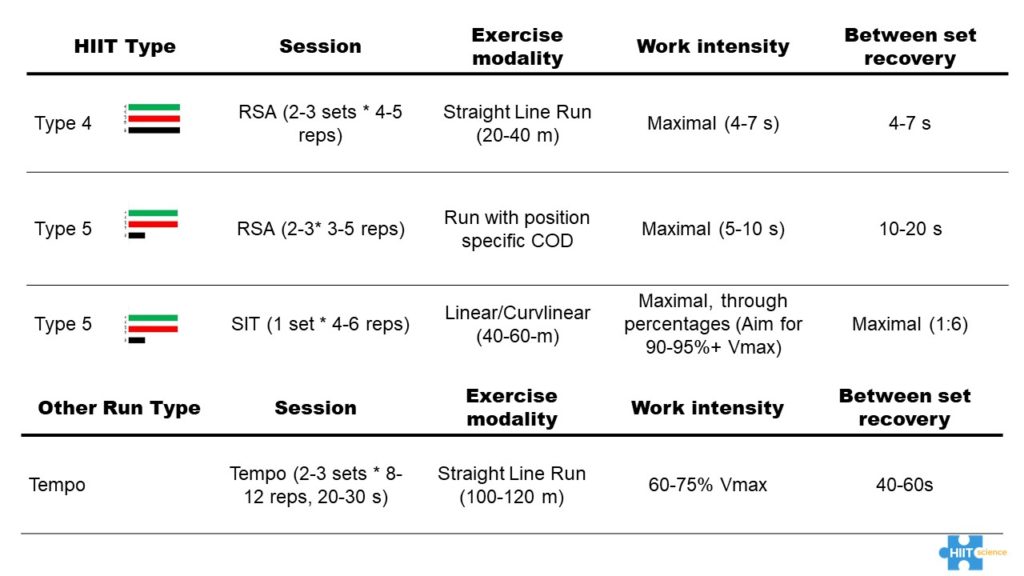 Figure 4. An analysis of the HIIT types used within elite Gaelic football.
Figure 4. An analysis of the HIIT types used within elite Gaelic football.
Tempo Running
We program tempo running based on a percentage of a player’s maximal velocity (65-85% Vmax). We normally prescribe these in line with a player’s match-play high speed running profile (typical player HSR output).
Tempo runs can be prescribed across 1-3 sets ranging from 100-130-m depending on the intensity, and the %Vmax the practitioner wants a player to work at.
Usually, these are prescribed with a 1:2 or 1:3 work to rest ratio with a 20-40s work duration and 40-120s recovery. Coaches may add more neuromuscular load (shifting from type 1 towards type 2) by adding in lateral changes of direction (Figure 5) within these tempo runs to increase physiological and neuromuscular loading.

Figure 5. An example of a multidirectional tempo run.
SIT
Exposure to sprint interval training (SIT) is a consistent element within any Gaelic football conditioning program, given the known benefits of exposure to high percentages of maximal velocity (Vmax) to lower injury risk (3).From a performance perspective, the “use or lose it, but don’t abuse it” analogy springs to mind.Typically, players will be exposed to higher Vmax work earlier in the week on a Tuesday, for example, in a controlled manner working through a range (70-100%) of effort levels. These reps also offer an opportunity to work on a players Vmax mechanics during repetitions. Also, coaches may utilise live GPS to provide feedback to players or performance staff on the Vmax hit during these reps. Coaches may choose to monitor player’s exposure to Vmax, and the players’ personal Vmax, on a rolling 10-day window and expose players to the stimulus when required.
SSG/GBHIIT
Small-sided games (SSG) or game-based HIIT (GBHIIT) are the primary methods of conditioning within Gaelic football. They form a central focus of any Gaelic football training program. SSG/GBHIIT consists of the execution of the fundamental skills of the game in open and closed drill situations. These are typically planned and administered by skills coaches.However, in recent years, coaches have engaged in detail with sports science and conditioning staff to optimise these games from a tactical periodisation, football quality, and conditioning perspective.The main objective of these drills is to improve a player’s skill execution across varying situations, ensure player understanding of the tactical elements of a team’s game plan, optimise player positioning in attacking and defensive situations, develop cohesion in attacking and defensive transitions, ensure understanding in set-piece situations (kick-outs, throw-ups, free-kicks, side-lines), engage in simulated gameplay phases and complete full match-play within an internal game. SSG/GBHIIT has multiple variables which can be manipulated (Figure 6) to ensure optimal skill and physiological conditioning takes place. Typically, these drill types allow for a range of HIIT targets to be trained (Types 1-5) with these easier to manipulate if a drill is closed.
The more open a drill becomes, and the more it replicates match-play, the harder these are to control.One may use the duration and intensity (meters per min; efforts per min, numbers per min) analysis to gain an understanding of how GBHIIT is replicating the internal and external demands a team typically faces during competitive match-play. Normally during a session, coaches will complete 3-5 sets of GBHIIT. Depending on the goals of a session, these can vary in time from 90s-12 min. These games may take on other variations that skills coaches may opt for also.
Within these SSG/GBHIIT, the sports scientist, or strength and conditioning coach should be monitoring live data both from an internal and external loading perspective to ascertain the demands being placed on players during these intervals.An objective feedback loop should be maintained between coaches and performance staff to ensure the optimisation of these drills. Typically, these are conversations between intervals with coaches on the percentage of game demands or the percentage of the required load left within the session to meet set targets from an internal and external load perspective.
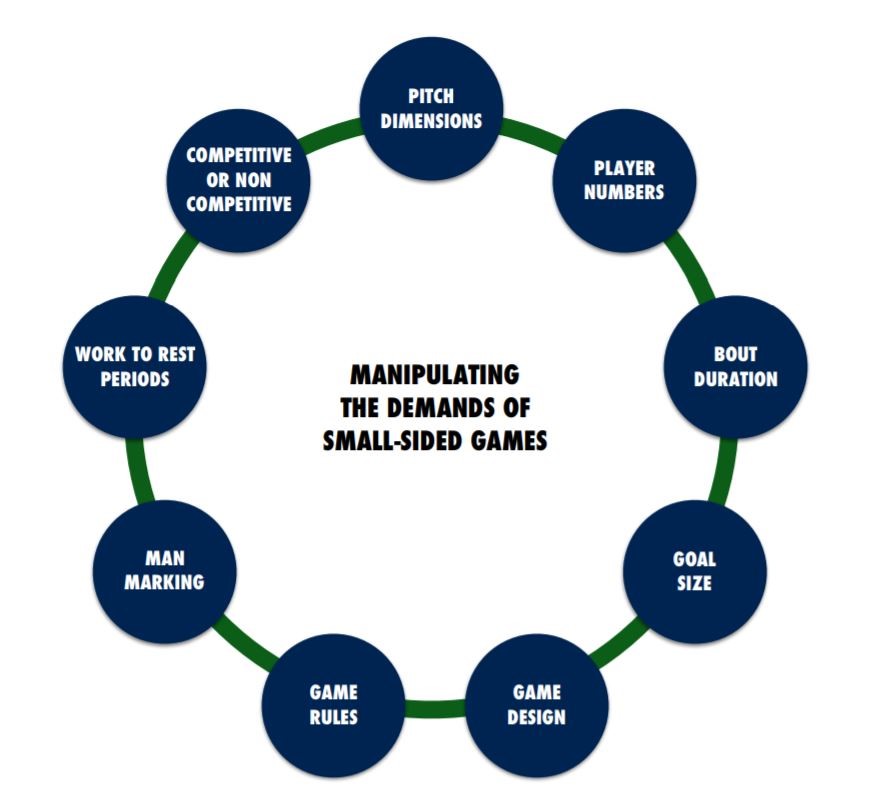
Figure 6. Some variables or conditions that can be manipulated within Gaelic football SSG/GBHIIT to alter the physiological and physical demands of the interval.
Conclusion
Within the Gaelic football training process, there are multiple options for coaches to select and many ways to skin a cat with respect to the application of the HIIT science.Overall, the approach should fit the sporting profile, player profile, and be placed holistically within each player’s performance bandwidth.Coaches should focus on quality, not quantity, and understand that as service providers, we must respect our context, while applying our sport science and strength and conditioning principles within a football-centred program.
References
- Cullen B, Roantree MT, McCarren AL et al. Physiological profile and activity pattern of Minor Gaelic football Players. J Strength Cond Res. 2017. 31(7): 1881-1820.
- Malone, S, Solan B, Collins DK, Doran DA. The positional match running performance of elite Gaelic football. J Strength Cond Res. 2016. 30(8): 2292-2298
- Malone S, Roe M, Doran D. et al. High chronic training load and exposure to bouts of maximal velocity running reduce injury risk in elite Gaelic football. J Sci Med Sport. 2017 20(3): 250-254.
- Malone S, Solan B, Collins K. The running performance profile of elite Gaelic football match-play. J Strength Cond Res. 2017. 31(1): 30-36
- Mangan S, Ryan M, Shovlin A, et al. Seasonal Changes in Gaelic football Match-Play running performance. J Strength Cond Res. 2019. 33(6): 1685-1691.






